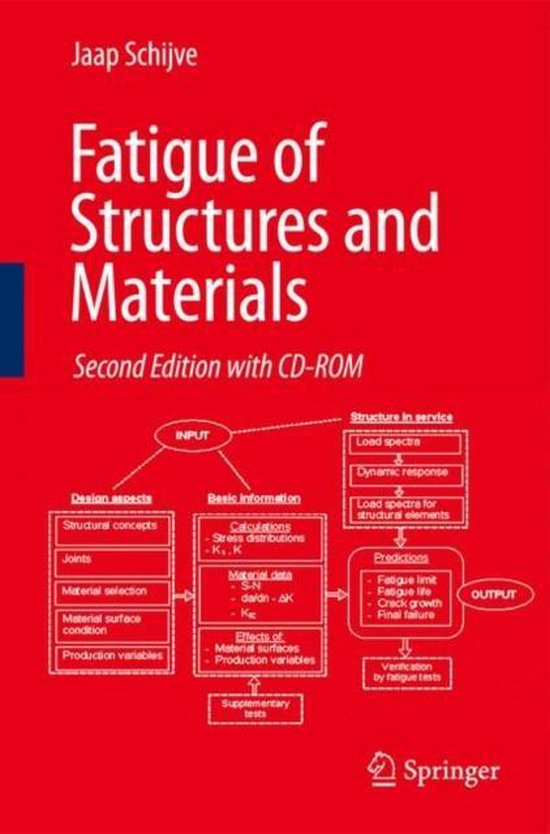
Fatigue of Structures and Materials
This book is primarily a textbook written for people working on fatigue problems of engineering structures and materials associated with design, predictions, load spectra and experimental verifications. Many different fields of interest are involved, as the block diagram on the front cover indicates. It is of great importance that all these aspects are well recognized and understood. The author explains the various topics in a number of chapters. Understanding of the fatigue phenomena covering both crack initiation and crack growth is emphasized in view of possible influences of design variables, material selection, production technology and load spectra on the fatigue performance of a structure. Prediction methods for fatigue lives and fatigue crack growth are discussed as well as verification by experiments. Load spectra analysis and statistical aspects are also addressed.
The first edition of this book was well received and has been used extensively in various courses taught to staff members and students of universities and other technical colleges as well as in industries and at research institutes. Therefore it was considered time for a second edition. In general, the format of the first edition of the book has been maintained, but the whole text has been carefully revised.
Fatigue of structures and materials covers a wide scope of different topics. The purpose of the present book is to explain these topics, to indicate how they can be analyzed, and how this can contribute to the designing of fatigue resistant structures and to prevent structural fatigue problems in service. Chapter 1 gives a general survey of the topic with brief comments on the signi?cance of the aspects involved. This serves as a kind of a program for the following chapters. The central issues in this book are predictions of fatigue properties and designing against fatigue. These objectives cannot be realized without a physical and mechanical understanding of all relevant conditions. In Chapter 2 the book starts with basic concepts of what happens in the material of a structure under cyclic loads. It illustrates the large number of variables which can affect fatigue properties and it provides the essential background knowledge for subsequent chapters. Different subjects are presented in the following main parts: • Basic chapters on fatigue properties and predictions (Chapters 2–8) • Load spectra and fatigue under variable-amplitude loading (Chapters 9–11) • Fatigue tests and scatter (Chapters 12 and 13) • Special fatigue conditions (Chapters 14–17) • Fatigue of joints and structures (Chapters 18–20) • Fiber-metal laminates (Chapter 21) Each chapter presents a discussion of a speci?c subject.
| Auteur | | J. Schijve |
| Taal | | Engels |
| Type | | Hardcover |
| Categorie | | Technologie & Bouwkunde |



